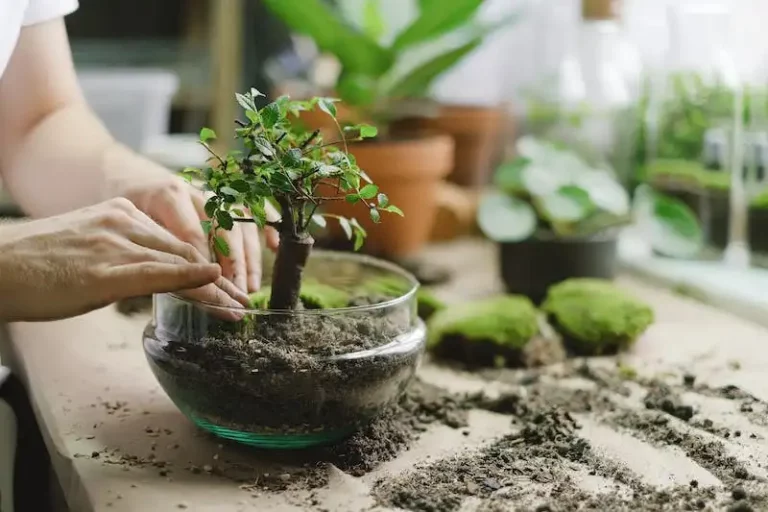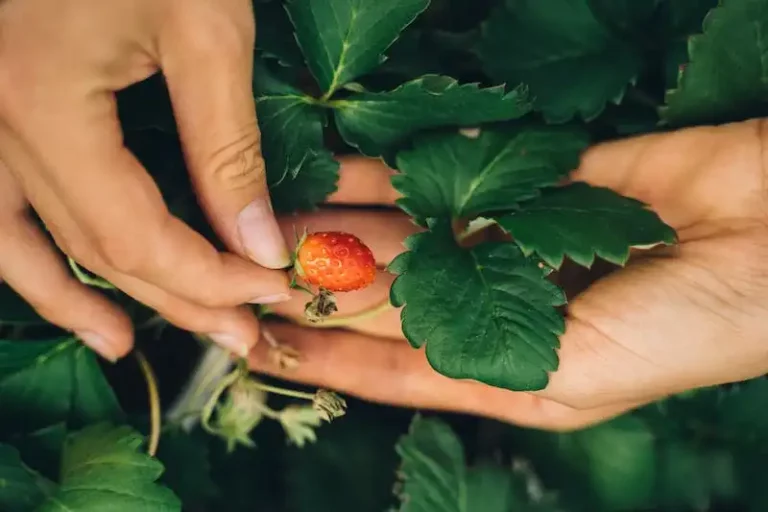Gardeners have long been taught that a well-manicured lawn is the sign of a cared-for garden. Lawns took hold in early 19th-century England, where the sprawling grass eventually symbolized status and wealth. But perhaps it’s time to consider alternatives.
The truth is, maintaining a lush green lawn can be costly, time-consuming, and detrimental to local ecosystems. Instead of spending hours on your hands and knees pulling out weeds and watering your lawn, why not let nature take its course?
There are plenty of benefits to replacing your lawn with more environmentally friendly alternatives. One option is to plant native wildflowers or other plants that naturally thrive in your area. These natives require less water, care, and maintenance than traditional lawns, and they also provide important ecosystems for local wildlife.
Another option is to create a rock garden, which can be a self-sustaining and low-maintenance addition to your outdoor space. Why not let a wild patch of grass, clover, or cowslips grow in a sunny corner of your yard? This will attract pollinating insects and create a mini ecosystem all on its own, eliminating the need for constant mowing and watering.
In the end, the best lawn is one that is alive and thriving, supporting a variety of plants, insects, and animals. So let your lawn go wild and embrace a more harmonious approach to gardening.
9 Ideas for Rewilding Your Yard
1. Stop mowing your lawn and let it go wild. Instead of spending hours with the lawnmower, consider allowing your yard to become a habitat for native plant species. This means letting grass and wildflowers grow freely, creating a natural and diverse ecosystem.
2. Plant seedlings and materials that will attract wildlife. Cowslips, chamomile, and orchids are some examples of plants that can attract butterflies, bees, and other pollinators to your yard. By providing food and shelter, you can create a haven for these important species.
3. Reduce the use of fertilizers and pesticides in your garden. Instead of using harmful chemicals to maintain your lawn, be proud of the wild growth. Grasses such as clover and trefoil are naturally pest-resistant and require less maintenance.
4. Leave certain areas of your yard exposed to create a mini-meadow. By cutting the grass less frequently and allowing wildflowers to bloom, you can attract a variety of insects and wildlife.
5. Incorporate native plants into your yard. Native plants are adapted to the local climate, making them more resistant to drought and disease. They also provide food and shelter for local wildlife.
6. Give your yard a makeover by adding flower beds and trees. This means finding old-fashioned, water-thrifty plantings that require less water and maintenance.
7. Create a wild corner in your yard. You can let a patch of land grow completely wild, attracting birds, butterflies, and other animals.
8. Certified permaculturists say that allowing a small area of your lawn to grow naturally can help with the growth of “weeds” that are actually beneficial to your yard and local wildlife.
9. Consider planting vetch, yarrow, and beetles to help naturally fertilize your yard. These plants and insects work together to add nutrients to the soil and promote healthy growth.
Learn about some simple steps you can take to begin evolving a high-maintenance lawn into a native and time-saving habitat
If you find yourself spending a significant amount of time and effort maintaining your lawn, it might be time to consider a different approach. Instead of a conventional manicured lawn that requires constant watering, treatments, and mowing, why not create a wildlife-friendly garden that not only requires less maintenance but also benefits the environment?
When it comes to creating a low-maintenance habitat, one important step is to clear the high-maintenance lawn. Removing the turf will expose the bare soil, which can then be prepared for new plantings. Instead of planting more high-maintenance grass, consider turning your yard into a wildflower meadow or a native plant garden. These types of plantings not only require less water but also provide better habitat for birds, butterflies, bees, and other wildlife.
One thing to consider is that the white clover is a great alternative to a traditional lawn. It is low-growing, requires less mowing, and stays green throughout the summer. Clover also attracts bees and other pollinators, making it a valuable addition to any garden. If you choose to grow clover, skip the weeding and let it grow. Clover is a nitrogen-fixing plant, which means it can improve soil fertility for other crops.
Another simple step to reduce maintenance is to apply mulch to the exposed soil. Mulch helps to conserve moisture, suppress weeds, and improve soil health. You can use various materials for mulch, such as wood chips, straw, or compost. Mulching around plantings will not only save you time by reducing the need for watering and weeding but also add a layer of natural beauty to your garden.
By making these small changes, you can create a habitat that is not only beautiful but also beneficial for wildlife. You can watch as butterflies flutter from flower to flower, bees buzz around happily, and birds find homes in your yard. And the best part is, you’ll spend less time on maintenance and more time enjoying the results of your efforts.
Why Rewild
Rewilding lawns has become a popular idea in recent years, as more people realize the benefits of leaving a part of their homes to grow wild. By letting native grasses and wildflowers take over, we can create habitats for a variety of plants and animals.
One reason why we should rewild our lawns is to give back to nature. Just a small corner of our yard, left untouched by mowing and clearing, can become a haven for biodiversity. The footfall of the lawn can be transformed into a sunny patch for flowers to grow. Especially in early spring, when water availability is limited, wildflowers like vetch and cowslips can add a burst of color to the monotony of grass.
Gardeners have long known that less is more when it comes to lawn care. By allowing wildflowers to grow alongside grass, we create a more natural state on our property. The larger leaves and diverse colors of wildflowers attract birds, bees, and other pollinators, helping to support their populations. This growth also acts as a major means of soil erosion control.
One of the first steps in rewilding a lawn is to clear away turf and any invasive grass species. It’s important to thoroughly remove the roots and till the soil to create a better environment for the wildflowers to flourish. Adding rocks, moss, and other natural materials can help create a diverse environment for the plants and insects.
| Steps to Rewild Your Lawn |
|---|
| 1. Remove the turf and any invasive grass species |
| 2. Thoroughly till the soil and remove any rocks |
| 3. Add moss, rocks, and other natural materials |
| 4. Plant native wildflowers and grasses |
| 5. Let nature take its course and resist the urge to weed |
By rewilding our lawns, we can create a beautiful and vibrant meadow-like environment. This not only benefits the local ecosystem but also reduces the need for harmful treatments like pesticides and neonicotinoids. So why not take pride in your garden and create a rewilded space that’s teeming with life?
Source: Karuna flickr
Go Native
If you want to give your lawn a natural and eco-friendly makeover, consider going native. Rather than maintaining a traditional grass lawn that requires regular mowing, fertilizers, and pesticides, why not create a native habitat that requires less maintenance and is better for the environment?
Moss, for example, is a great alternative to traditional green lawns. It can withstand footfall and requires less water and mowing. Additionally, moss is resistant to pests and can help retain moisture in the soil.
Another popular option is to replace your lawn with native wildflowers. Not only do these flowers add beauty and color to your garden, but they also provide food and habitat for local wildlife. Plants such as yarrow, chamomile, and cowslips are easy to grow and attract pollinating insects.
By creating a native habitat, you are rewilding your garden and helping to conserve the natural world. Native plants have adapted to the local environment and can often thrive with little intervention. This means less watering, fewer chemicals, and happier, healthier plants.
Instead of using costly fertilizers and pesticides, try using mulch made from native plants. This acts as a natural weed suppressant and helps to retain moisture in the soil. It also adds nutrients as it breaks down.
Native plants are also generally more resilient to pests and diseases. They have evolved alongside local predators and have developed natural defenses. By planting native species, you are creating a balanced ecosystem where pests are kept in check naturally.
So why not go native and embrace the beauty of a wilder garden? Let moss take over those shady areas where grass struggles to grow. Plant wildflowers for a burst of color and encourage pollinators. And top it all off with native herbs like thyme and trefoil, which not only look great but also provide a low-maintenance crop for yourself.
Going native doesn’t mean your garden has to be a mess. With a little planning and maintenance, you can have a beautiful and wildlife-friendly garden that will require less work and be beneficial to the environment.
Skip Chemicals
Skip the popular, yet costly and time-consuming, chemical treatments for your lawn. Instead, consider a natural makeover for your grass. By rewilding your yard, you can help increase the habitat for local animal species and create a healthier, more pollinating environment.
When rewilding your lawn, simply let it go wild. Skip frequent mowing and allow grasses and wildflowers to grow freely. A layer of mulch can help contain weed growth and retain moisture, while also providing a habitat for beneficial insects.
You can also add plantings of native wildflowers and other pollinator-friendly species to create a mini meadow in one corner of your lawn. Choose a variety of plants, such as scabious, thyme, and orchids, to provide a continuous bloom throughout the year. This evolving landscape can be a great source of pride for green gardeners.
Wild lawns require less care compared to traditional grass lawns. They can also help save you time, as there is no need for frequent mowing or chemical treatments. Plus, you’ll be providing a haven for bees, butterflies, and other pollinators.
If you’re concerned about the messy look of a wild lawn, you can still keep certain areas smooth and clear for activities and pets. Leave some small patches of mown grass for a neat and orderly appearance. These areas can also serve as a transition zone between the wild and more cultivated areas of your yard.
| Benefits of Rewilding Your Lawn |
| 1. Increased habitat for local animal species |
| 2. Healthier, pollinator-friendly environment |
| 3. Cost-saving and time-saving alternative to chemical treatments |
| 4. Provides a haven for bees, butterflies, and other pollinators |
Rewilding your lawn is a simple and effective way to create a more natural and environmentally friendly yard. With just a few steps, you can turn your lawn into a thriving ecosystem in harmony with nature.
So, say goodbye to chemicals and embrace the beauty and benefits of a wild lawn!


